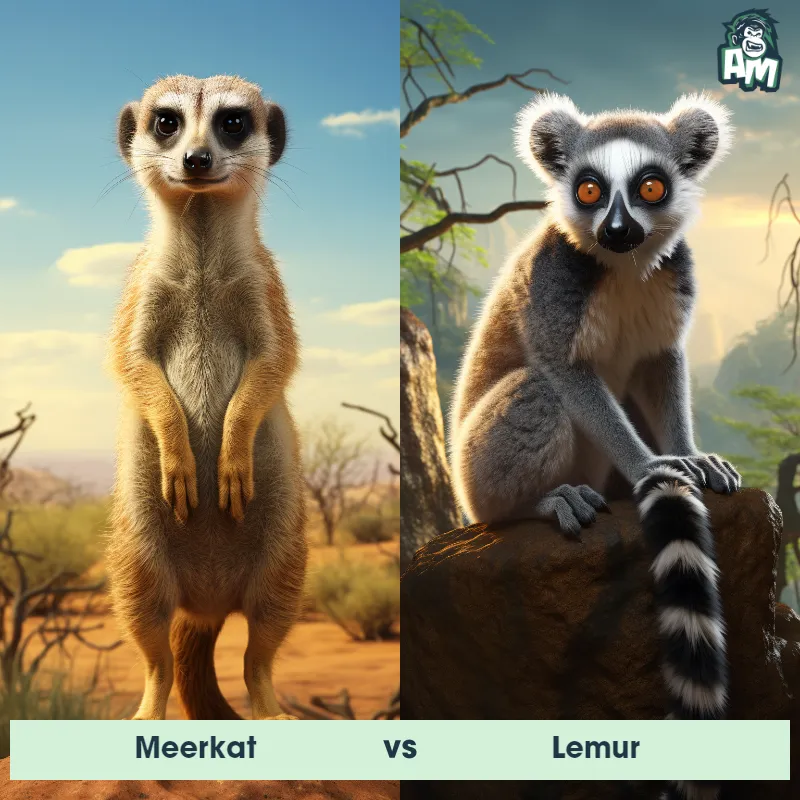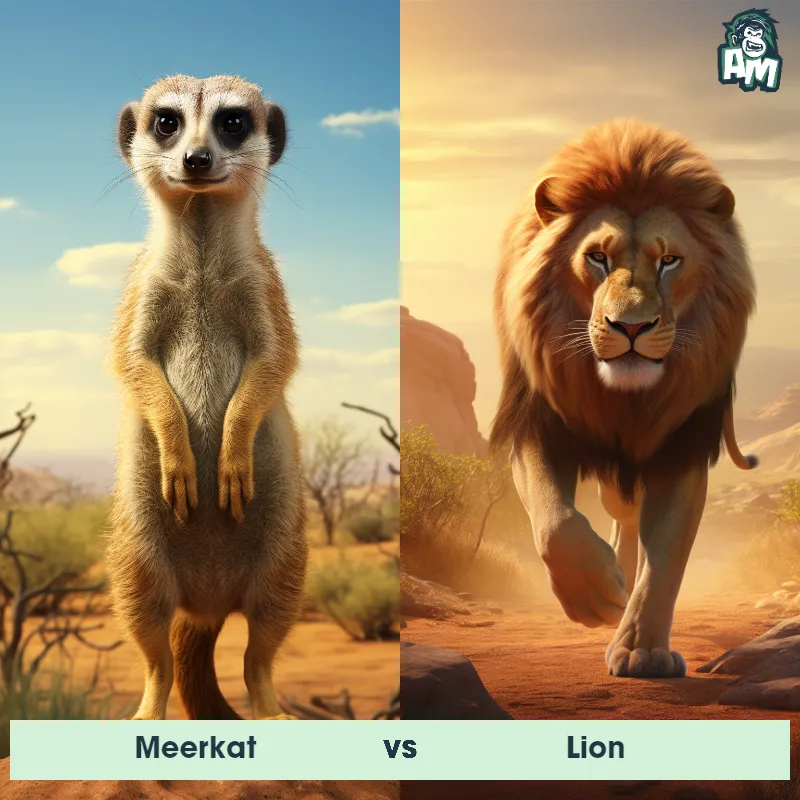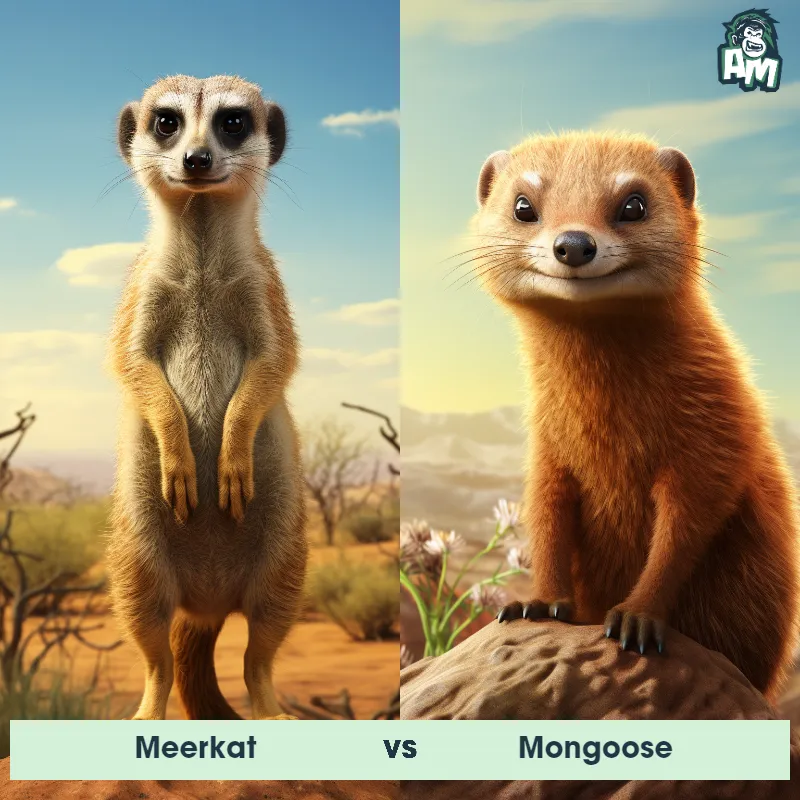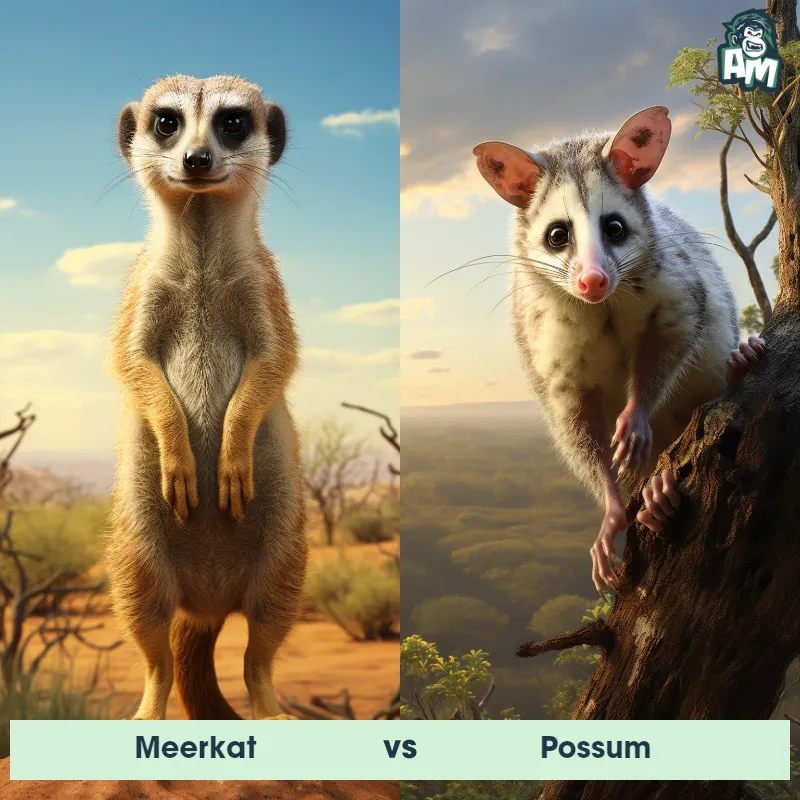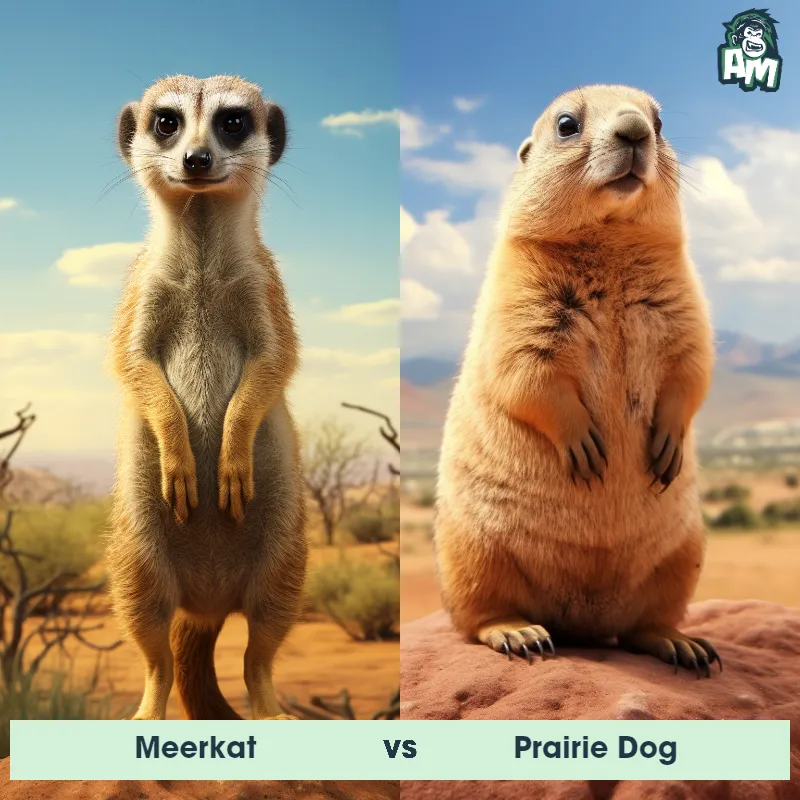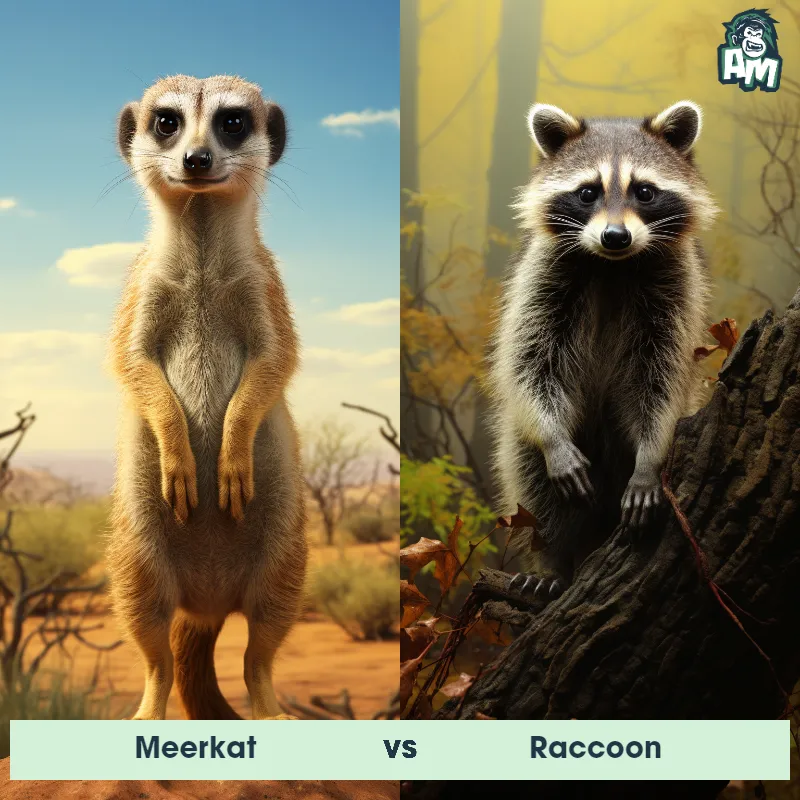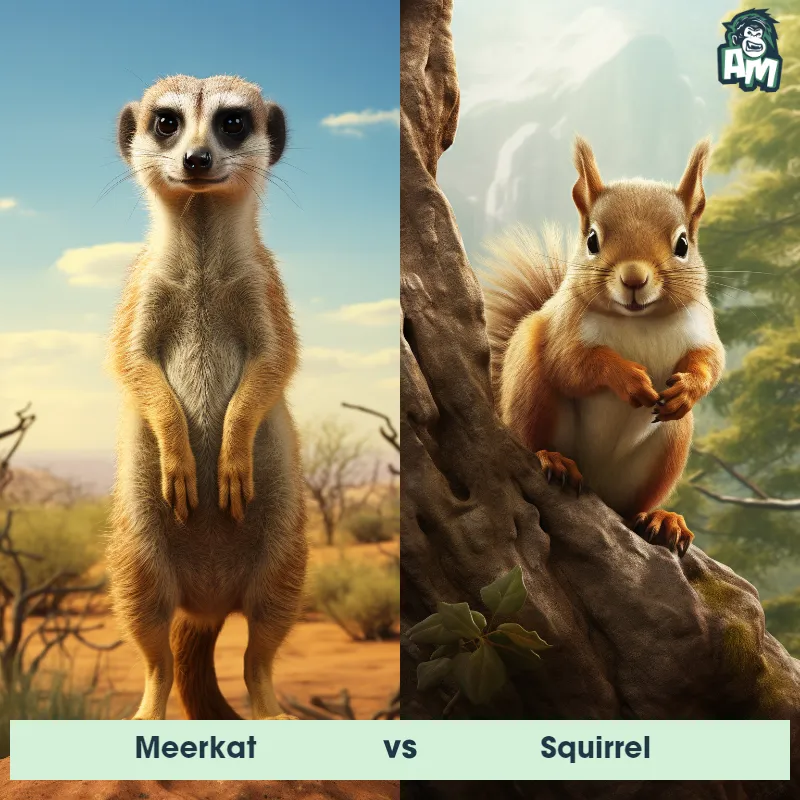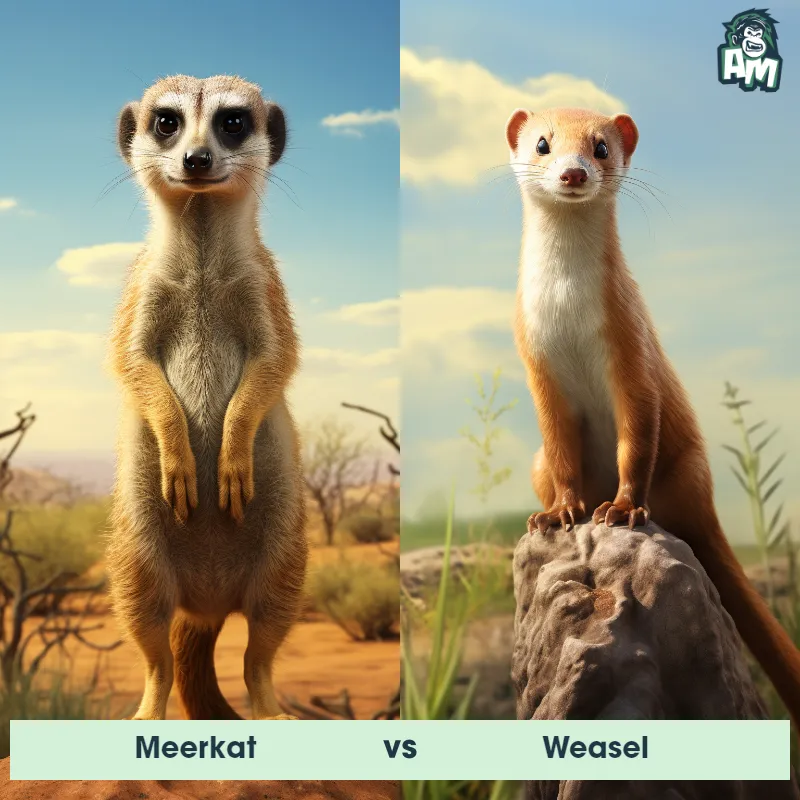The Meerkat
The Meerkat, also known as the suricate, is a small mammal often found in the deserts and grasslands of southern Africa. With their slender bodies and long tails, they measure about 25 to 35 centimeters in length, not including their tail, which can be an additional 17 to 25 centimeters. Their fur is usually reddish-brown or grayish in color, with distinct black patches around their eyes. Meerkats have sharp claws and strong front legs, which they use for digging burrows. They are highly social animals, living in groups called mobs or gangs, and are known for their cooperative behavior, as they work together to forage, stand guard, and raise their young.

| Meerkat | |
|---|---|
| Size | 14 inches (35.56 cm) |
| Weight | 1.5 lbs (0.68 kg) |
| Speed | 20mph (32km/h) |
| Key Strength | Immunity to certain types of venom |
| Biggest Weakness | Small size and lack of physical strength |
| Scientific Name | Suricata suricatta |
| Family | Herpestidae |
| Habitat | Arid regions, savannas, and grasslands |
| Geography | Southern Africa |
| Diet | Insects, spiders, and small mammals |
| Lifespan | 12 years - 14 years |

The Meerkat
The Meerkat, also known as the suricate, is a small mammal often found in the deserts and grasslands of southern Africa. With their slender bodies and long tails, they measure about 25 to 35 centimeters in length, not including their tail, which can be an additional 17 to 25 centimeters. Their fur is usually reddish-brown or grayish in color, with distinct black patches around their eyes. Meerkats have sharp claws and strong front legs, which they use for digging burrows. They are highly social animals, living in groups called mobs or gangs, and are known for their cooperative behavior, as they work together to forage, stand guard, and raise their young.
Fun Fact: Meerkats have a unique way of protecting themselves from the scorching heat of the African sun, as they have developed the ability to close their ears to prevent sand from entering and causing damage while they are digging in sandy areas.
| Meerkat | |
|---|---|
| Size | 14 inches (35.56 cm) |
| Weight | 1.5 lbs (0.68 kg) |
| Speed | 20mph (32km/h) |
| Key Strength | Immunity to certain types of venom |
| Biggest Weakness | Small size and lack of physical strength |
| Scientific Name | Suricata suricatta |
| Family | Herpestidae |
| Habitat | Arid regions, savannas, and grasslands |
| Geography | Southern Africa |
| Diet | Insects, spiders, and small mammals |
| Lifespan | 12 years - 14 years |
Meerkat Matchups
We use AI to simulate matchups between the Meerkat and other animals. Our simulation considers size, strength, and natural predatory behaviors to determine the most likely outcome.
Meerkat: Diet, Predators, Aggression, and Defensive Behaviors
What do meerkats eat?
Meerkats are omnivores, meaning they eat both plants and animals. Their diet consists of insects, spiders, scorpions, small reptiles, birds, eggs, roots, fruit, and seeds. They are known to work together as a group to forage for food, with some members of the group standing guard while others search for prey.
Do meerkats have any predators?
Yes, meerkats have several predators in the wild. These include birds of prey such as eagles and hawks, as well as larger predators like jackals, hyenas, and snakes. Meerkats are constantly alert and vigilant to threats, and will emit alarm calls to warn their group of approaching danger.
Are meerkats aggressive?
Meerkats are not typically aggressive towards one another, as they live in cooperative family groups called mobs. Within these groups, there is a clear social hierarchy, with dominant individuals asserting their authority. However, they may show aggression towards rival groups of meerkats if they encroach on their territory.
Do meerkats fight?
While meerkats may occasionally engage in physical conflicts, these fights are usually brief and not often escalated to serious injury. Meerkats are more likely to engage in vocalizations and body language to assert dominance within their group or defend their territory from intruders.
How do meerkats defend themselves?
Meerkats have various behavioral adaptations to defend themselves from predators and other threats. One of their most effective defenses is their ability to work together as a group, with individuals taking turns standing guard while others forage for food. They also have keen senses of sight and smell, allowing them to detect danger from a distance.
What is the biggest weakness of meerkats in a fight?
The biggest weakness of meerkats in a fight is their relatively small size and lack of physical strength compared to many of their predators. While they are fast and agile, they may struggle to defend themselves against larger predators like jackals or eagles. However, their cooperative group behavior and alarm calls help them to mobilize quickly and evade danger when necessary.
Fun Fact: Meerkats are famous for their upright posture and constantly scanning their surroundings while standing on their hind legs, which not only helps them to explore their environment but also serves as a form of communication within the group, signaling danger or the presence of food.
Fun Fact: Meerkats have a specialized diet that includes a variety of insects, small rodents, reptiles, and even scorpions, but they also feed on plant matter such as fruits and roots when prey is scarce, displaying their adaptability and resourcefulness in challenging environments.



